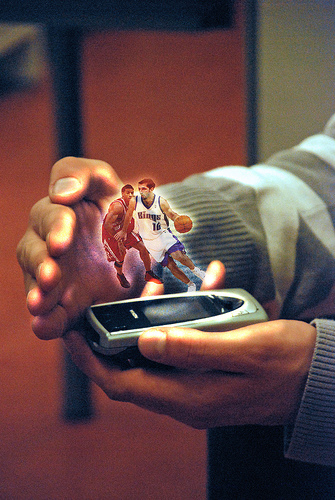Japan Pledges 3D Holography for 2022 World Cup

TOKYO: Japan is betting it will have holographic TV technology ready in time to host the 2022 World Cup soccer event. The Japan Times said the country unveiled its bid for the 2022 World Cup on Monday. Japan and South Korea would co-organize the event and employ 3D, holographic display technology into the coverage.
“The high-tech projects include images being beamed onto giant 3-D hologram-style flatbed screens, translation earpieces for fans of different nations to converse with each other, and devices to instantly capture information by pointing at players on the pitch,” The Times said.
Keio University’s Jun Murai is assisting in the development of the proposed technology He said there were challenges to achieving full holography in 12 years, but that the research phase was completed. Functioning equipment is expected as soon as 2016.
Indeed, Japan’s National Institute of Information and Communications Technologies demonstrated crude electronic holography at the NAB show last year. Here is what video expert Mark Schubin noted of that demo:
“On the reproduction end, it appears to be true wavefront reconstruction. Laser beams are used just as they were in original holograms to reproduce the wavefronts captured in the interference patterns of the holograms. Three lasers were used for the three primary colors. The resulting hologram appeared to float in space. It was tiny and had a limited viewing angle. It also suffered not only from laser speckle but also from other noise.
“On the capture end, the system is not holographic. It uses something called an ‘integral camera.’ It is an ultra-high-definition camera--sometimes referred to as 8K--shooting a normally lit scene through a ‘fly’s-eye’ planar array of small lenses. A computer then processes the image into an interference-pattern type hologram, using the wavefront information captured from the fly’s-eye lens array. The interference patterns are then sent electronically, live except for the processing latency, to three small liquid-crystal displays, which are illuminated by the reproduction lasers.”
The Japan Broadcasting Corp. also showed a similar 8K integral camera at the same trade show, he said. “But this time the image was projected directly through another lens array onto a screen. Viewers needed no 3D glasses and could move their heads to see around objects.
“Both NICT’s and NHK’s integral-camera demonstrations resulted in very crude images. There is no technological reason, however, preventing future improvements.”
-- Deborah D. McAdams
See...
“Technology fuels Japan’s 2022 Bid,” in The Japan Times.
April 20, 2009: “Holography Update”
“This is the most exciting thing I’ve seen at NAB in my 37 years of doing NAB. It was beyond anything I could have expected…they have actual electronic holography.”
Get the TV Tech Newsletter
The professional video industry's #1 source for news, trends and product and tech information. Sign up below.
